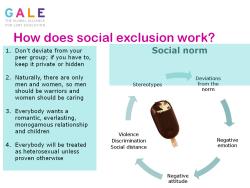Defensive freeze reaction in the brain helps to act better

15 August 2019 - Someone who initially “freeze” in a threatening situation can then shoot faster. This is the result of research among candidate police officers, who subsequently shot faster and more accurately during the tests. The research, conducted by brain scientists at Radboud University, was published in Scientific Reports in March. This finding supports the GALE technique which educates teachers and LGBTI activists to respond to fierce homophobia and transphobia.
Freeze, fight or flight
Police officers often have to make decisions under acute threat, which can adversely affect their performance. To decide in practice whether he or she is shooting, an agent must be able to switch appropriately between keeping a close eye on the situation and taking immediate action. Like any people, when police officers are confronted possible threat, they experience a “fight or flight” impulse, which is hard-wired in our lower brain. Commonly, such an impulse starts with a “freeze” during which the body becomes tense and stiffens.
The freeze experiment
Brain scientists from the Donders Institute of Radboud University (Netherlands) investigated how people decide to shoot, looking at defensive stiffening and fighting flight responses in the MRI scanner. In two independent MRI investigations, among civilians and candidate police officers, they showed that stiffening-related activations in the brain were a predictive factor for faster and more accurate shooting afterwards.
Stiffening was mapped by heartbeat delay, body immobility and brain activation in the so-called periaqueductal gray, an area in the midbrain where pain and defensive behavior are dealt with. The switch to active shooting was accompanied by rapid heart rate increase and activation in the prefrontal cortex, a brain area associated with perception of striking visual stimuli and expression of anxiety. These results provide the first evidence that defensive responses such as stiffening can have a supportive role in decision-making regarding action.
GALE educating technology
In GALE trainings, participants learn to deconstruct how heteronormativity and phobia creates a “fight or flight” response in students as well as teachers. If unchecked, this negative impulse can become an more stable negative attitude, which in turn can result in negative behavior. Which in turn creates negative emotions again. GALE maintains that the negative impulse is the most basic element in this vicious circle, and that the cycle needs to be broken by acting on each link in the cycle. However, because the anger and fear emotions (fight or flight impulse) are at the basis of all following stages, it is imperative that teachers and activists learn to deal with these emotions themselves and educate phobic people on how to deal with them as well.
Participants in GALE trainings learn to recognize fight or flight impulses and to overcome them in themselves before responding to phobic comments. The next step is to help students to overcome their own discriminatory impulses. Only after students have been coached out of their negative emotions, a proper dialogue on values and norms becomes possible. The research on “freeze” responses shows that the theory behind the GALE trainings is a sound one.
Source: Radbout University Recharge


